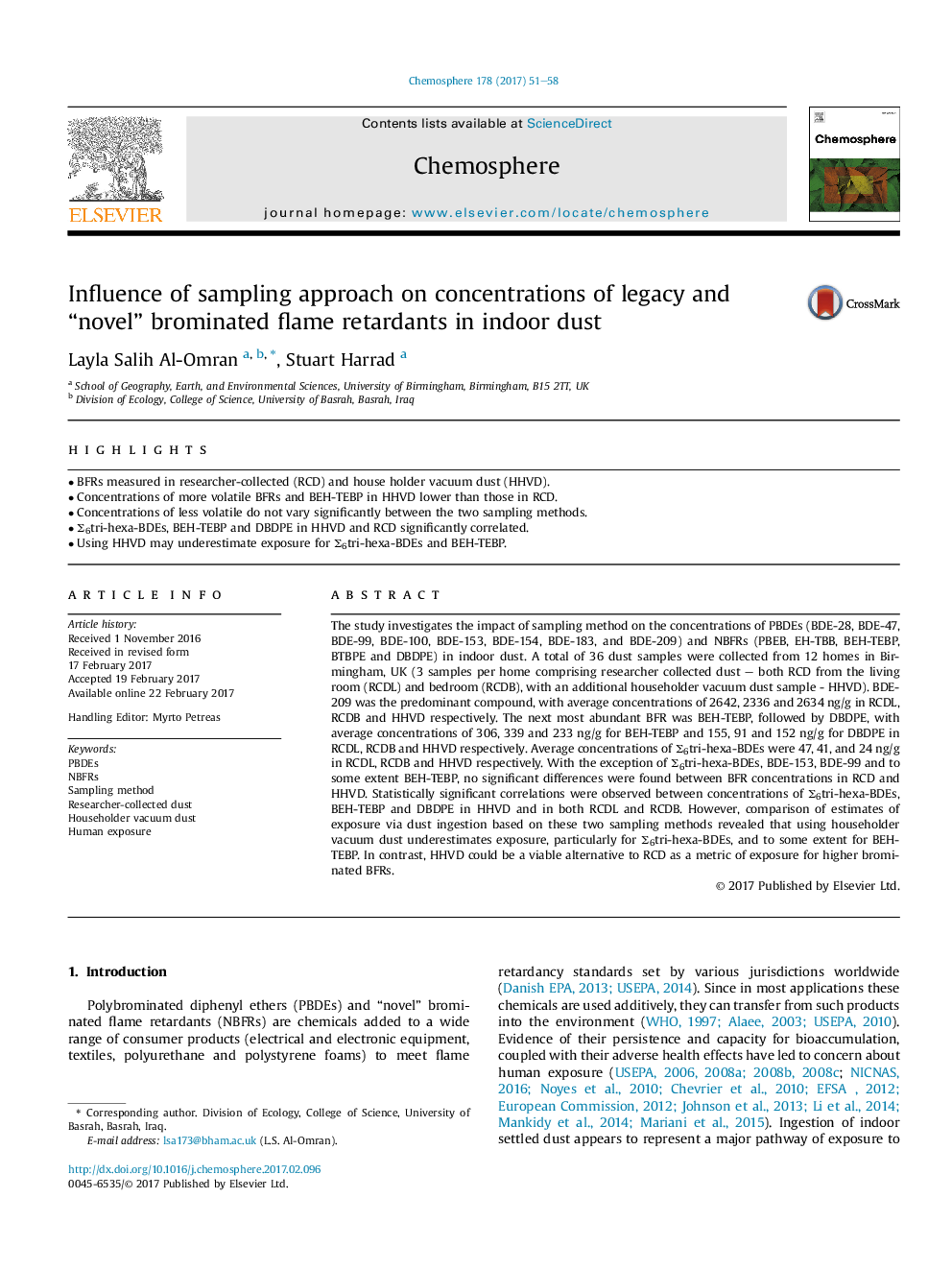| کد مقاله | کد نشریه | سال انتشار | مقاله انگلیسی | نسخه تمام متن |
|---|---|---|---|---|
| 5747219 | 1618793 | 2017 | 8 صفحه PDF | دانلود رایگان |

- BFRs measured in researcher-collected (RCD) and house holder vacuum dust (HHVD).
- Concentrations of more volatile BFRs and BEH-TEBP in HHVD lower than those in RCD.
- Concentrations of less volatile do not vary significantly between the two sampling methods.
- Σ6tri-hexa-BDEs, BEH-TEBP and DBDPE in HHVD and RCD significantly correlated.
- Using HHVD may underestimate exposure for Σ6tri-hexa-BDEs and BEH-TEBP.
The study investigates the impact of sampling method on the concentrations of PBDEs (BDE-28, BDE-47, BDE-99, BDE-100, BDE-153, BDE-154, BDE-183, and BDE-209) and NBFRs (PBEB, EH-TBB, BEH-TEBP, BTBPE and DBDPE) in indoor dust. A total of 36 dust samples were collected from 12 homes in Birmingham, UK (3 samples per home comprising researcher collected dust - both RCD from the living room (RCDL) and bedroom (RCDB), with an additional householder vacuum dust sample - HHVD). BDE-209 was the predominant compound, with average concentrations of 2642, 2336 and 2634 ng/g in RCDL, RCDB and HHVD respectively. The next most abundant BFR was BEH-TEBP, followed by DBDPE, with average concentrations of 306, 339 and 233 ng/g for BEH-TEBP and 155, 91 and 152 ng/g for DBDPE in RCDL, RCDB and HHVD respectively. Average concentrations of Σ6tri-hexa-BDEs were 47, 41, and 24 ng/g in RCDL, RCDB and HHVD respectively. With the exception of Σ6tri-hexa-BDEs, BDE-153, BDE-99 and to some extent BEH-TEBP, no significant differences were found between BFR concentrations in RCD and HHVD. Statistically significant correlations were observed between concentrations of Σ6tri-hexa-BDEs, BEH-TEBP and DBDPE in HHVD and in both RCDL and RCDB. However, comparison of estimates of exposure via dust ingestion based on these two sampling methods revealed that using householder vacuum dust underestimates exposure, particularly for Σ6tri-hexa-BDEs, and to some extent for BEH-TEBP. In contrast, HHVD could be a viable alternative to RCD as a metric of exposure for higher brominated BFRs.
Journal: Chemosphere - Volume 178, July 2017, Pages 51-58